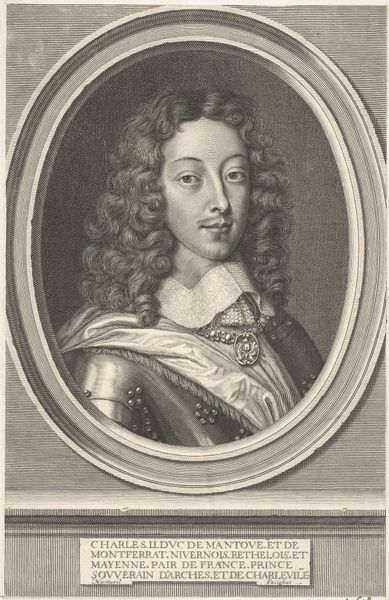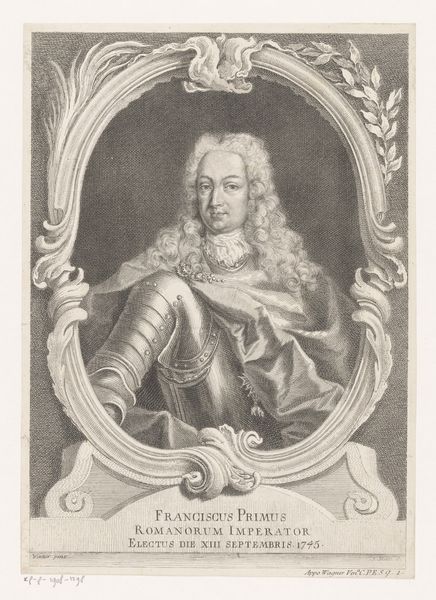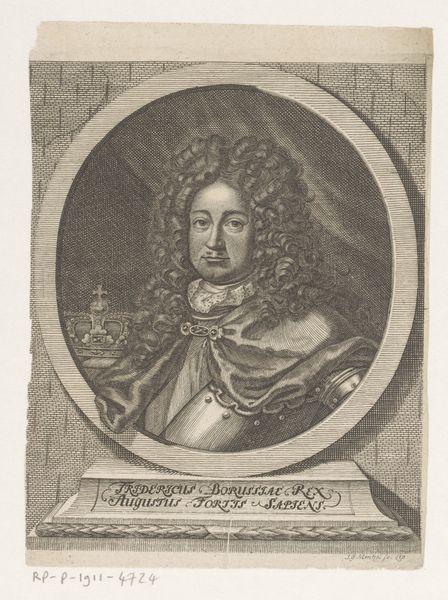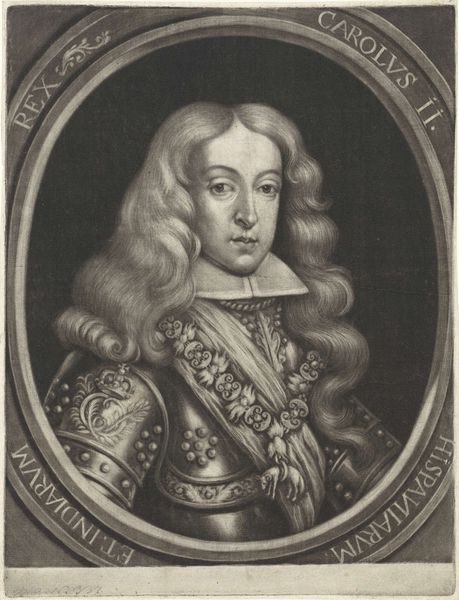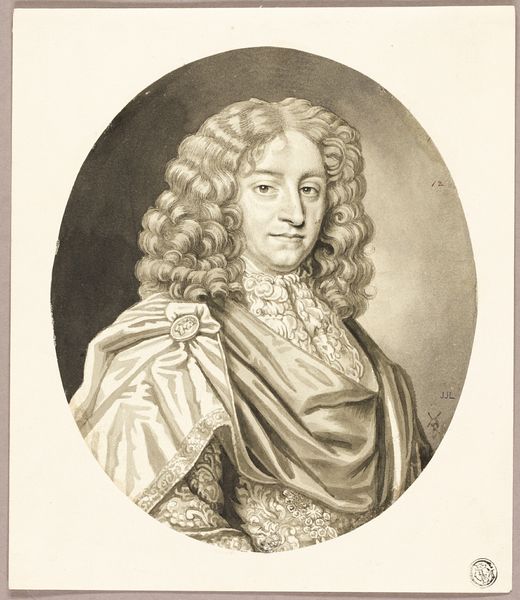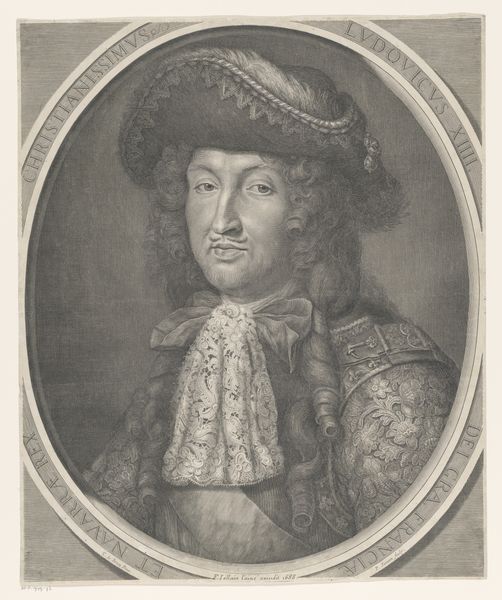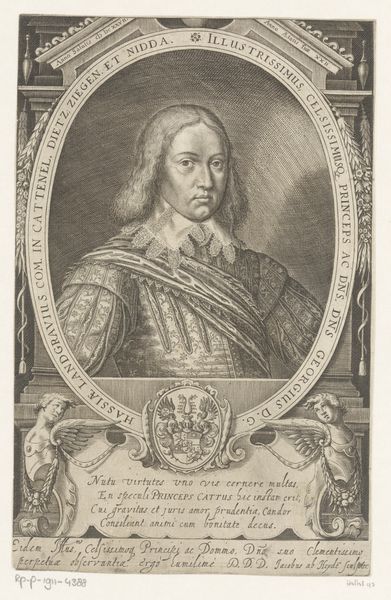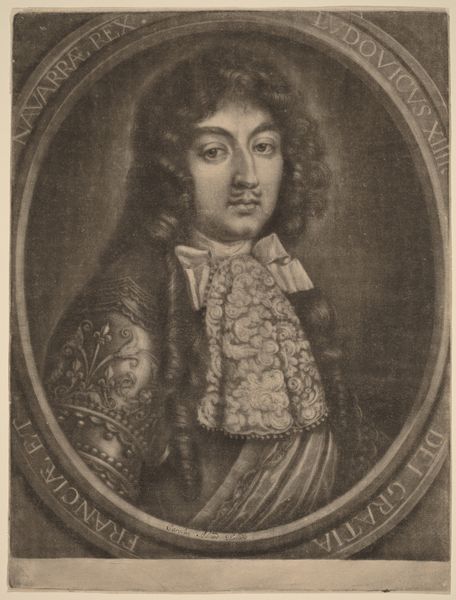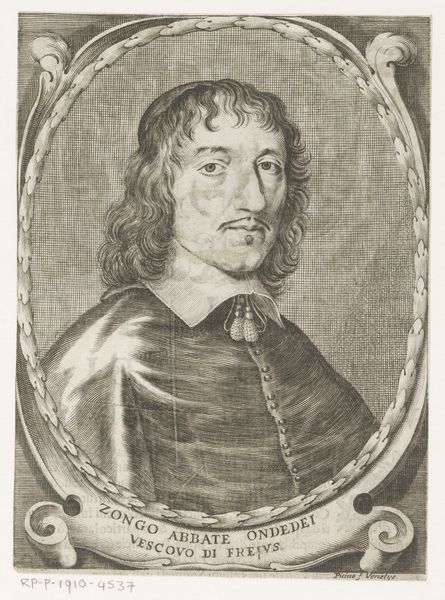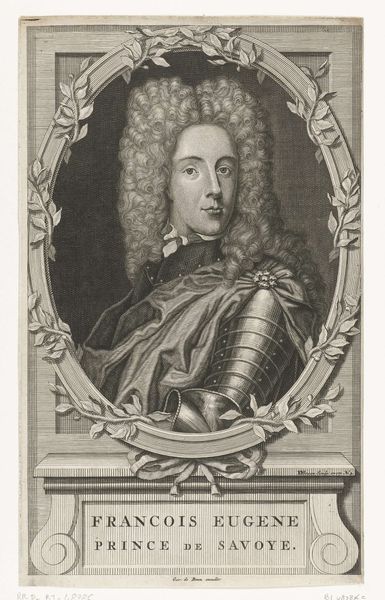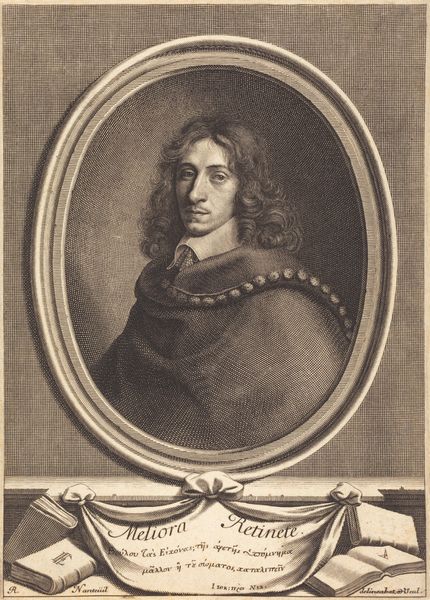
print, engraving
#
portrait
#
baroque
# print
#
historical photography
#
history-painting
#
engraving
Dimensions: 545 mm (height) x 402 mm (width) (bladmaal)
Curator: Looking at this piece, I’m struck by the subject’s solemnity, his piercing gaze. The contrast in shading gives him almost a ghostly appearance. Editor: Indeed. What we’re viewing here is an engraving titled “Grev Valdemar Christian” crafted around 1650 by Albert Haelwegh. It resides here at the SMK, the Statens Museum for Kunst. As a print, it has interesting implications. Curator: An engraving immediately situates it within a specific context of artistic production. The labour involved – the skill and time carving into that metal plate – is palpable. It speaks to the democratization of images through reproducible media, wouldn’t you say? It can move beyond paintings only seen by those of nobility or with access. Editor: Absolutely. Prints played a vital role in disseminating imagery and ideas, influencing public perception, even political discourse, well beyond courtly circles. Consider the iconography itself. His attire, a military style—what story does that clothing tell us about social status? Curator: The suggestion of armor certainly alludes to power, to martial prowess, while simultaneously underscoring a societal hierarchy. But how were such materials sourced, what was the life like of those who worked them to the form shown here? Such garments don’t emerge from thin air; they rely on complex material networks. We have textiles, metalwork… a vast underpinning of labor made visible, literally pressed onto the page through the labor of the engraving itself. Editor: Precisely. And that brings up questions about patronage, and consumption, doesn’t it? Who commissioned this print? What was its purpose in courtly life? The subject becomes part of a visual regime, intended to be seen and distributed, and in so doing cements his identity. He has power of image making now. The political potency is clear. Curator: The artist too had certain considerations and access that affects how his likeness appears in the world. Were there preliminary drawings that aided in realizing the composition on a metal plate? What tools did Albert Haelwegh need to produce it and from where did these tools come from? Editor: These prints created the "reality" or at least defined a version of reality for mass distribution. Looking back we can investigate not just aesthetic styles, but the foundations of how the very perception of people's existences developed and became recorded and shared. Curator: I come away with a sharper awareness of the material world woven into every line of this engraving, its making, and how its visual form is an important marker for how social hierarchy solidified. Editor: I am struck, looking at the historical narratives in front of us in these images. Their accessibility is crucial to shaping historical knowledge and cultural narratives beyond elite circles.
Comments
No comments
Be the first to comment and join the conversation on the ultimate creative platform.
